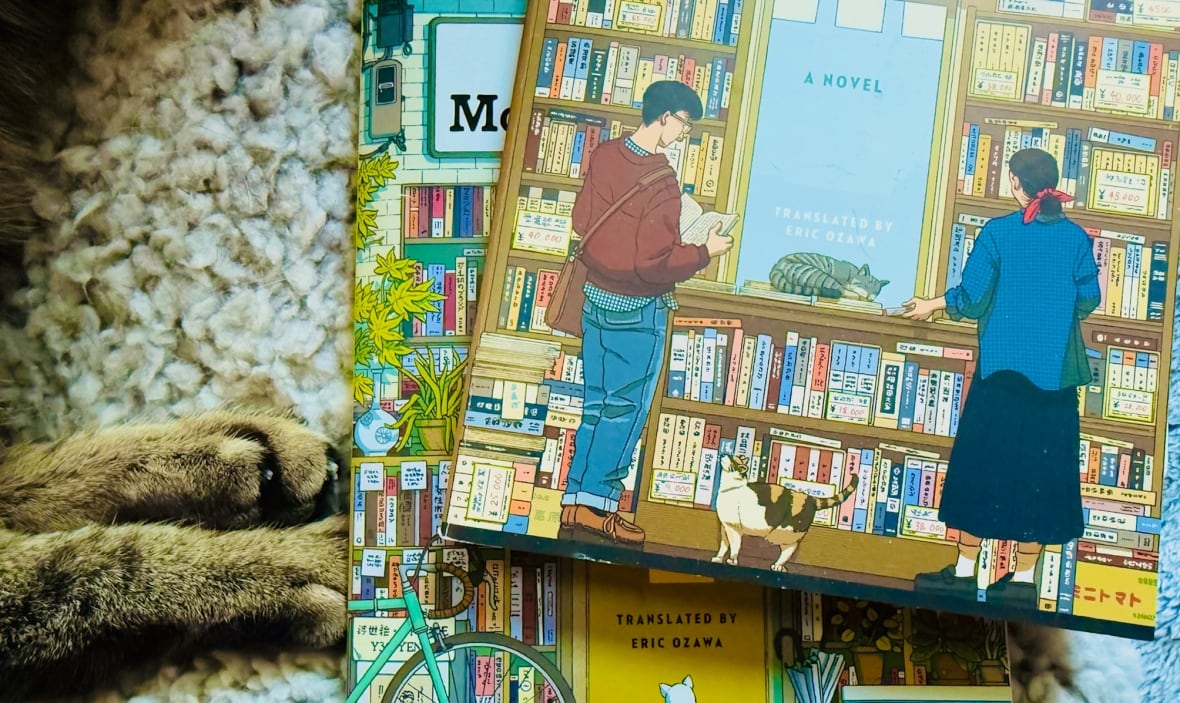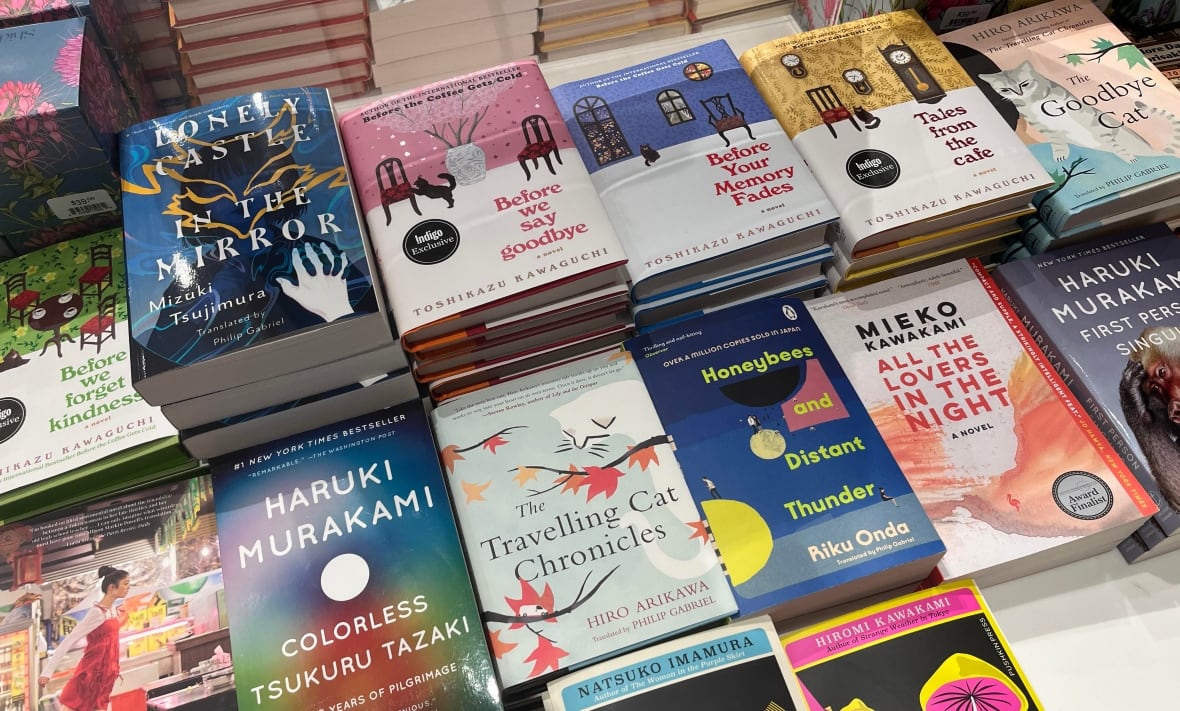It gets increasingly difficult in the darkest days of winter to find comfort on any level: physically, mentally, existentially.
It’s cold and grey, the world is in turmoil, and slowly, the idea of floating out to sea on an ice floe becomes more and more appealing. Luckily, there are books. And a trending genre called “healing fiction” might just get you through. Better still: It’s about cats, coffee and bookstores.
Also called cozy fiction or cat fiction, and primarily found in Japanese and Korean literature, the genre has taken off worldwide. As the Japan Times points out, these whimsical, escapist books have long been popular in that country, where the iyashikei (healing) genre already thrives in manga and anime.
In Korea, healing fiction has been skyrocketing in popularity among the self-dubbed “MZ Generation,” a combination of millennials and Generation Z who feel particularly pressured to succeed, notes the Korea Times. Easy-to-digest books like The Healing Season of Pottery tend to describe burned-out people who find growth and peace.
But now translations of popular titles — like Syou Ishida’s We’ll Prescribe You a Cat, Toshikazu Kawaguchi’s Before the Coffee Gets Cold and Welcome to the Hyunam-dong Bookshop by Hwang Bo-Reum — have found a new and enthusiastic global audience in people just trying to feel something.
“It’s not sad. It’s not. And yet I feel the most insane, crippling sense of sadness in my chest that I don’t think will ever go away,” said TikToker Sivan Sardar, with mascara streaming down her face, in a video about Before the Coffee Gets Cold with more than 1.5 million views.
The books have gained traction within BookTok, TikTok’s reading community. Major book sellers like Indigo and Barnes and Noble have added “Cozy Japanese Fiction” sections to their websites, stores and online reading challenges. The Booker Prize website notes translations of Japanese and Korean books have climbed up global bestseller lists, and in the U.K., Japanese fiction is the most popular form of translated literature.
Literary reviews call them “life-affirming,” “resonant” and “stories that need telling.” The New York Times writes that it’s not unusual for fans to burst into tears at Kawaguchi’s book signings.
On Goodreads, readers of healing fiction describe near-transcendent experiences.
“This was the feel-good book I needed in my life right now. I laughed, I cried and if there was ever magic I could believe in it would be in cats and their ability to be the cure for all that ails the world,” wrote a fan in their review of We’ll Prescribe You a Cat.
The aesthetic of comfort
The healing fiction style tends to offer a familiar, nostalgic atmosphere within a slice of contemporary urban life, set in cities like Tokyo or Seoul. It’s often melancholic but also romantic.
The books have recurring motifs: coffee shops, bookstores, libraries and cats. They’re often rooted in magical realism, with time travel elements and cats with healing powers. But at their core, the books tend to be about human connection, love, loss, yearning, regret and hope.
Premises include a coffee shop where you can travel through time, working in a second-hand shop and finding redemption, or quitting your job to open your own store. There’s also a “clinic for the soul” that prescribes people cats, and a librarian whose book recommendations change people’s lives.
“The aesthetic of comfort that really reached its peak during the [COVID-19] pandemic continues to be appealing for readers and audiences today,” Michelle Cho, an associate professor in East Asian Studies at the University of Toronto, told CBC News.

“The rise of translations of East Asian literary works is a notable phenomenon in the last five years — I think it goes hand-in-hand with the visibility of East Asian popular culture, more generally, in the last decade.”
Cho attributes the popularity of the books to a burgeoning East Asian media and food culture that’s created a repertoire of tropes and cultural spaces in multiple mediums. Examples include Japanese drama Midnight Diner, Korean television series Would You Like a Cup of Coffee?, and music channels and genres like Japanese lo-fi and Korean café music and ambience.
This broader comfort aesthetic uses the same body of tropes, like cats and cafés.
Midnight Diner, for instance, is simply about a tiny Tokyo diner that’s only open overnight, and the patrons who share their stories while eating dishes prepared by a mysterious chef known only as “Master.” On its trailer, a fan commented, “This series literally changed my life.”
“This isn’t just happening in the space of literary fiction and translation,” Cho said.
We get an answer from a cognitive neuroscientist on whether listening to an audiobook counts as reading a book.
Escapism in ‘tumultuous times’
There’s also an element of escapism in the healing genre there that appeals to a modern audience during tumultuous times, says Carly Watters, a senior literary agent with P.S. Literary Agency.
“I think our industry always does a very good job of catering to that piece of escapism, as books always have,” Watters told CBC News.
“But between the election, and COVID and climate change … when people think about how they want to spend their downtime, they do want to get away, and they do want to escape, and I think that really feeds into it.”
In one of the most well-known series in the genre, readers can escape into a dimly lit coffee shop. The five books in Kawaguchi’s Before the Coffee Gets Cold series are set in an old, below-ground café called Funiculi Funicula that offers patrons the chance to travel back in time.

The series has sold more than six million copies around the world in 46 languages, according to the New York Times. But if you ask Kawaguchi why fans are so attached to his series, he doesn’t have an answer.
“Even I don’t really know why they’ve done so well,” he said in a translated video interview last year.
Kawaguchi described his surprise at seeing videos of people crying while reading his series. The English translation of the fifth book, Before We Forget Kindness, was published in Canada in November by Harper Collins.
In Kingston, Ont., on Wednesday, the book was one of dozens on display on a “Japanese Cozy Fiction” table tucked in a nook at an Indigo bookstore. A handful of customers eagerly looked at the brightly coloured covers, picking some up and flipping through the pages.
An Indigo employee directed customers to the table if they couldn’t find it on their own. But the two cozy cats adorning the sign were a good clue they were in the right place.




